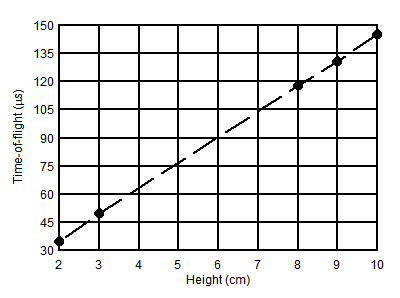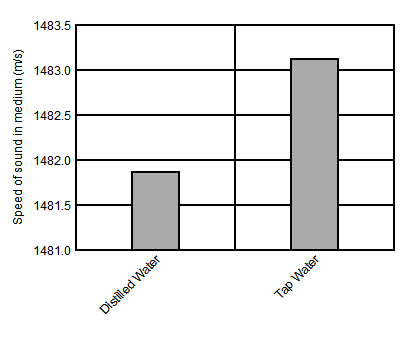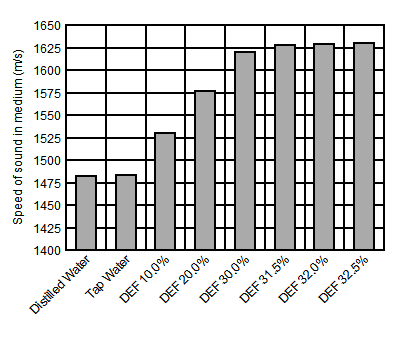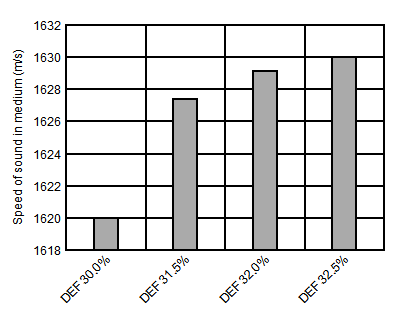SNAS648C October 2014 – February 2023 TDC1000
PRODUCTION DATA
- 1 Features
- 2 Applications
- 3 Description
- 4 Revision History
- 5 Pin Configuration and Functions
- 6 Specifications
- 7 Parameter Measurement Information
-
8 Detailed Description
- 8.1 Overview
- 8.2 Functional Block Diagram
- 8.3 Feature Description
- 8.4 Device Functional Modes
- 8.5 Programming
- 8.6 Register Maps
- 9 Application and Implementation
- 10Device and Documentation Support
- 11Mechanical, Packaging, and Orderable Information
Package Options
Mechanical Data (Package|Pins)
- PW|28
Thermal pad, mechanical data (Package|Pins)
Orderable Information
9.2.1.3 Application Curves
The data used in the following level and fluid identification graphs was collected using ultrasonic test cells. The test cells are acrylic plastic containers with width of 2.54 cm and ultrasonic transducers attached to the outside using cyanoacrylate glue. The transducers in this experiment are STEMiNC 1MHz piezo electric ceramic discs (SMD10T2R111). Equivalent transducers with the following characteristics could be used:
- Piezo material: SM111
- Dimensions: 10mm diameter x 2mm thickness
- Resonant frequency: 1050 kHz (thickness mode)

| FLUID HEIGHT IN TANK | TIME-OF-FLIGHT (µs) |
|---|---|
| Full (10 cm) | 145 |
| Full – 1 (9 cm) | 131 |
| Full – 2 (8 cm) | 118 |
| 3 cm | 50 |
| 2 cm | 35 |

| FLUID | SPEED OF SOUND (m/s) |
|---|---|
| Distilled water | 1481.87 |
| Tap water | 1483.13 |

| FLUID | SPEED OF SOUND (m/s) |
|---|---|
| Distilled water | 1481.87 |
| Tap water | 1483.13 |
| DEF 10.0% | 1530.49 |
| DEF 20.0% | 1576.42 |
| DEF 30.0% | 1620.00 |
| DEF 31.5% | 1627.37 |
| DEF 32.0% | 1629.15 |
| DEF 32.5% | 1630.00 |

| FLUID | SPEED OF SOUND (m/s) |
|---|---|
| DEF 30.0% | 1620.00 |
| DEF 31.5% | 1627.37 |
| DEF 32.0% | 1629.15 |
| DEF 32.5% | 1630.00 |